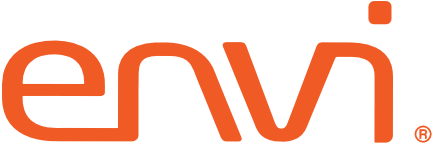
Every smart system has a control center – from airport control towers, to personal computers and phones, and even inside our homes, where smart thermostats, home security systems, and our appliances now communicate to help manage our busy lives.
In healthcare organizations, supply chain is the smart system that keeps everything running. We’ve pressure tested it throughout 2020 – and although not perfect, the enormous improvements we’ve made over the past two decades made the difference between continued patient care and not being able to treat those who were ill.
Let’s look at the heart of supply chain success – the item master. It’s the “control center” that keeps our organizations up-to-the-minute with the right products, right prices, right quantities, and helps ensure they get to the right place at the right time.
Set Goals to Set the Stage
If your item master isn’t yet your smartest asset, set goals to improve.
First, be sure your technology is aligned with needs. Are you supporting a single facility or an enterprise of diverse organizations with wide-ranging service lines? Second, create processes that will support ongoing maintenance of your item master. It’s a living system; keep it healthy with ongoing updates and data cleansing that maintain accuracy and increase automation. Finally, reduce costs by driving buyers to an approved formulary of on-contract items. By bringing your organization’s spend under management, and you’ll reduce costs every time an item is purchased, not just on occasion or on certain items.
Six Steps to Build Best Practice
1. Give your item master a critical review
- Is it the single approved formulary for your organization?
- What percentage of items ordered aren’t in your formulary?
- Do you have a consistent process to identify and add recurring items?
- What percentage of invoices accurately price match?
2. Evaluate, eliminate, classify
- Pull purchasing history for the past 12-18 months and identify the most frequently purchased products. Now ensure they’re in your item master!
- Eliminate items you no longer use, have been discontinued or are duplicated
- Ensure the products you do purchase are up-to-date, with descriptions cleansed and normalized, classified by category using UNSPSC, with unit of measure and pricing updated. Purchasing will be more accurate and processes more automated – including your 3-way price match.
- Warning! Avoid identifying items at a SKU level. You’ll quickly see that a single product can exist multiple times, because you purchase it from multiple vendors. Your item master will contain the same item over and over again, creating both upstream and downstream difficulties, and inaccurate purchasing information.
3. Focus on product descriptions and price for automation and accuracy
- Ensure product descriptions are normalized to a specific standard for your organization. Start with the noun, then adjective / attributes. Example: Gloves, size 7 powder free latex. This way, you can easily find items you’re looking for (and identify duplicates)
- Identify the correct unit of measure based on use and correlate price to unit of measure, then verify correct contract price with your GPO.
- Use consistent product classification. Home-grown identification may have helped initially inside your organization, but you’ll achieve greater automation and more accuracy with vendors and GPOs using UNSPSC.
4. Whenever possible, simplify! You’ll save time with fewer items and vendor relationships.
- Is the same item carried by multiple vendors and listed multiple times in your item master? If you must maintain more than 1 vendor for a product, prioritize them in your item master to help direct buyers.
5. Launch an ongoing maintenance process and train users
- Determine who can add to the item master and what rules will be followed.
- Larger organizations often have a team that can make additions and updates to the item master. Smaller groups usually designate a single person. Ensure clear guidance is in place for anyone authorized to make additions.
6. Make it easy for buyers by directing them to your approved formulary
- Set up requisition templates to guide your users to the on-contract products approved by your organization to maximize savings.
When you’re in control of your item master, you’re increasing visibility to spend and your end-to-end supply chain. When you put processes in place to maintain your item master, you’re building a system that’s easier for buyers, more accurate for your facilities, and the smart control center of your organization.
